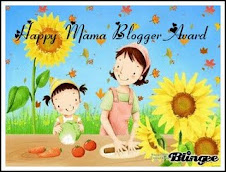Recently I have been enjoying blogs like The 3 Foragers. They are also from New England, so what they find is similar to what is in my local area.
So this week during school vacation I will focus on what spring has to offer here in the way of FREE food!
I began in our yard, right next to the house...




The top 2 pics are chickweed, very easy to identify once you know how. I have no idea what the bottom left plant is called, but I have been picking and eating it for literally as long as I can remember; I used to call it "sour grass" as a kid as it is very sour, reminscient of SweetTarts candy to me! Does anyone out there know its name?? Bottom right is obviously dandelions. All of the plant can be used, but I started with just the greens, best when young without a thick rib down the middle.
Not quite as wild, but often overlooked...

Rhubarb doesn't need
any attention to do its
thing. Just let it grow
and pick when the stems
are pink/red. Though it's
a vegetable, rhubarb is
usually treated like a
fruit and used in desserts.
 It is also quite tart and
It is also quite tart andneeds sweetening. Just
remember that only the
stems are edible.
There are many varieties
of violets, but the delicate
ones growing in yards and
roadsides and in forests are
easy to identify and pick. The little flowers add some nice
color to salad, and can make a lovely embellishment for desserts!
Now maybe there are some of you out there more expert than me on the subject. I've got a few books on my Amazon wishlist, but have yet to purchase anything.




I've heard that some varieties of sedum (top left) are quite tasty, albeit peppery. And what is this groundcover on the right? Or how about the lower left that carpets the forests in the area? Or the weed on the lower right that is EVERYWHERE around these parts? Even if they're not edible, I'm surrounded by them and would love to know the names of some of these plants.
 After washing the greens
After washing the greensin a big bowl of water, I
stuffed them all into the
food processor with a bit
of salt and chopped them
up. Then added the rest of
my usual tofu quiche
ingredients.
 I cooked up some onion
I cooked up some onionand bac-un strips and
mixed everything together.
Normally I probably use
about 1 cup of greens, but
I had at least 2 cups of
packed greens and I used
them all.
 The result was VERY green,
The result was VERY green,and a bit strong, but Nate &
I loved it. The only person
who didn't finish his was
Ryan. I served it alongside
some potato & carrot home-
fries, with a touch of ketchup.










6 comments:
Your unidentified plant - isn't it sorrel? I though so in the beginning...not so sure now...
My grannie used to prepare a delicious sorrel soup.
Well I figured out just this afternoon that one of them is invasive garlic mustard. But not sure about sorrel, since we get sorrel from our CSA on occasion and it doesn't look like any of those, but maybe there's a wild variety that's very different.
One plant is sheep sorrel, if you turn the leaf upside-down, it looks a bit like a sheep's head(ears and plump lower face). The wild sedum is also called orpine. That garlic mustard is in it's second year of it's biennial life. The smaller top leaves are good to eat, very mustardy. The first year growth has rounder leaves and no flower stalk, but the root is good to dig and use like horseradish. I suspect the little leaves carpeting the forest floor are Canadian May Lily. They will make a wee white flower spike, and then a small spike of red berries. Sadly, not edible, and always makes us stop suddenly when we think we see ramps.
Thanks for the mention! Karen
Just a suggestion: take your book wish list to Alibris.com. Some of the books may be gently used, but the prices are much better than Amazon.
We like Steve Brill's "Identifying and Harvesting Edible and Medicinal Plants"--only drawings, though. Samuel Thayer's "The Forager's Harvest"--photos.Elias & Dykeman "Edible Wild Plants- A North AMerican Filed Guide"--photos. Samuel Thayer also has a new book out "Nature's GArden" which we will get soon.
You are a wealth of knowledge Karen, thanks!!
Wow, I am such a scaredy-cat about trying plants in the wild, but you are really making me want to get into this. I love the idea of it.
Post a Comment